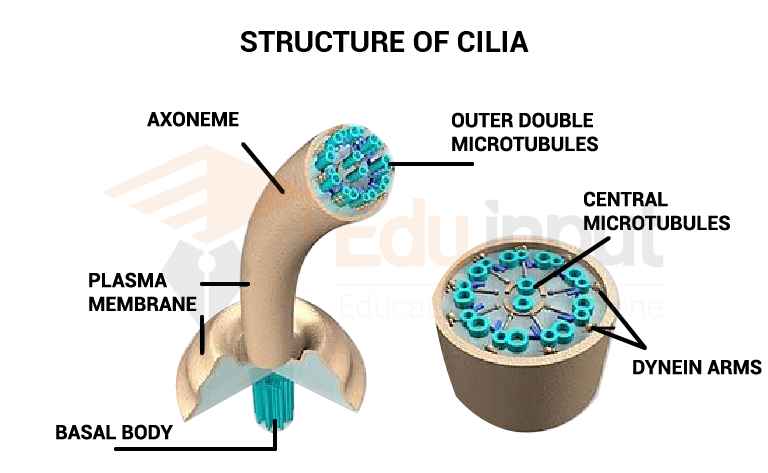Classification of Lichens
Lichens are classified based on their growth form, habitat, internal structure , and fungal partner.
Lichens actively contribute to ecosystems through their unique growth forms, specialized habitats, and reproductive strategies, demonstrating their ecological importance.
Classification Of Lichens
Lichens can be classified into different types based on their growth form, habitat, internal structure, and fungal partner.
Based on Growth Form
There are following classes of lichens based on their growth form:
Crustose Lichens
Crustose lichens have a flat, thin, and crust-like appearance without distinct lobes. They typically grow closely attached to stones, rocks, tree barks, and trunks. Examples include Haematomma puniceum and Graphis scripta.
Foliose Lichens
Foliose lichens are visually attractive and have a leaf-like structure. They are flat, broad, and often have crinkled and twisted edges. Foliose lichens possess a distinct upper and lower surface and are usually found attached to rocks and twigs using rhizoids. Cetraria, Cladonia, Parmelia, and Xanthoria are common examples of foliose lichens.
Fruticose Lichens
Fruticose lichens are characterized by their thin and freely branched growth form. They form larger and more attractive structures that stand out from tree branches, foliage, and rocks. Examples of fruticose lichens include Cladonia, Ramalina, and Usnea.
Based on Habitat
Here are the classes of lichens based on their habitat:
Lignicolous
These lichens inhabit woodlands and grow on decaying wood or dead tree branches.
Corticolous
Corticolous lichens grow on the bark of trees.
Saxicolous
Saxicolous lichens are found growing on stones or rocks.
Marine
Marine lichens grow on siliceous rocks near the shores of the sea.
Freshwater
Freshwater lichens grow on hard siliceous rocks, particularly in freshwater environments.
Terricolous
Terricolous lichens grow on the soil and are often referred to as terrestrial lichens.
Based on Internal Structure
Here are the types of lichens Based on Internal Structure:
Heteromerous Lichens
Heteromerous lichens have a distinct layering in their thallus, consisting of different fungal and algal layers.
Homoiomerous Lichens
Homoiomerous lichens lack a clear layering in their thallus and have a more uniform structure throughout.
Based on Fungal Partner
Here are the types of lichens Based on Fungal Partner:
Ascolichens
In this case, lichens belong to Ascomycota Majority of the lichens belong to this group. It is further divided into two groups on the basis of fruiting bodies. These groups are Gymnocarpeae and pyrenocarpea.
Ascolichens have an ascomycete fungus as their primary fungal partner involved in the lichen symbiosis. They reproduce sexually using ascogonia and spermogonia.
Basidiolichens
Basidiolichens are a type of lichen that is a member of the Basidiomycota, which is a smaller group of lichens than the Ascomycota.
Basidiolichens have a basidiomycete fungus as their primary fungal partner. They reproduce sexually using basidia and spermatia.
Hymenolichens
Hymenolichens also have a basidiomycete fungus as their primary fungal partner. They form specialized reproductive structures called hymenial basidia, which produce basidiospores.
Species Of Lichens
The lichens are a combination of a fungus with algae or cyanobacteria. It has a very different form (morphology), physiology, and biochemistry than the parts growing by themselves. Thus lichens may be called species. But they are not single species like plants and animals. Lichens are combinations of species from two or three different biological kingdoms.
Thus they have no common lineage. By convention. lichens have the same scientific name as the fungus in them. They are not classified according to the species of the algae or cyanobacteria growing in them. The algae or cyanobacteria have their own, unique, scientific name. There are about 20,000 known species of lichens. Some lichens have the ability to reproduce sexually. But they are still taken as specie.
Common Naming Of Lichens
Common names for lichens may contain the word moss like Reindeer moss and Leeland moss. The lichens may superficially look like and grow with mosses. But lichens are not related to mosses or any plant. Lichens do not have roots that absorb water and nutrients like plants. Instead, they produce their food from sunlight, air, water, and minerals in their environment. Some lichens may grow on plants. Such lichens do not live as parasites. They use the plants only as a substrate.




Leave a Reply